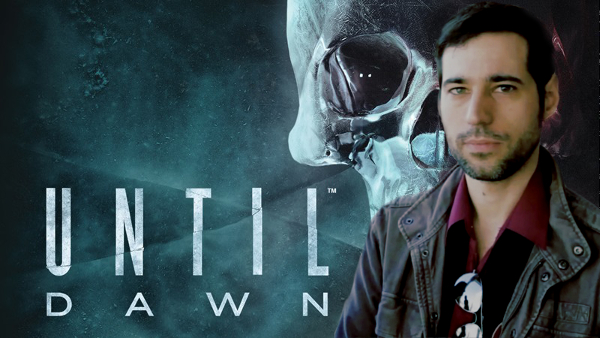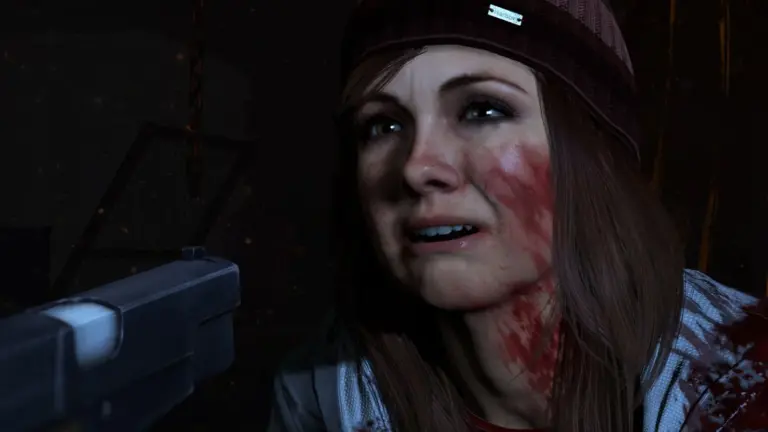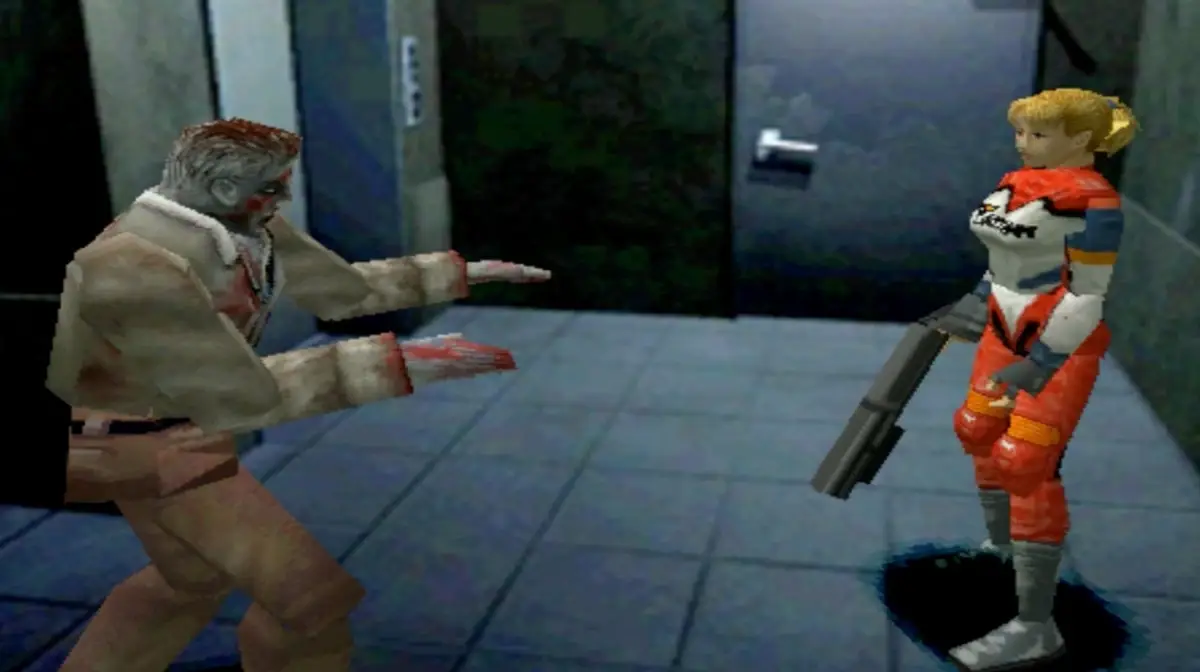
Until Dawn is now available exclusively for the PlayStation 4. Supermassive Games has crafted one of most engaging horror games in recent memory, and a lot of that is due to its solid writing. Designed with many branching paths, Until Dawn’s narrative changes drastically based on your decisions.
Below you’ll find our in-depth interview with one of the game’s lead writers, Graham Reznick. And if you haven’t already, check out our review!
Has the story of the game changed significantly since we first saw the original PlayStation 3 version?
The overall story of the game is relatively similar to the original. The biggest visual changes – the move from first person to fixed third person camera angles and the high fidelity facial capture – made it necessary to rewrite all of the dialogue and many of the story beats to fit the more cinematic nature of the experience. Because the subtle facial performance of the actors could now be represented much more accurately, we were able to tone down a lot of the dialogue (which originally had a far more campy feel, almost a true parody) and move the narrative along based on actor nuance rather than expositional lines shouted from off screen at a player (in first person mode) that might not be looking at a particular actor the moment the line was delivered.
Which films did you look to for inspiration?
The basic ones that Supermassive drew on in creating the game were classic slasher films from all different eras like SCREAM, HALLOWEEN, FRIDAY THE 13th, THE TEXAS CHAINSAW MASSACRE, I KNOW WHAT YOU DID LAST SUMMER, MY BLOODY VALENTINE, and even CABIN IN THE WOODS. Working to develop the characters and create the dialogue, Larry Fessenden (my co-writer) and I looked to all sorts of sources. I’m a gigantic fan of how the Coen brothers craft dialogue – creating a language and verbal rhythm that’s not necessarily realistic, but is specific to the characters in the world of the film. It’s incredibly memorable and infectious. Heightened and stylistic. It seemed like the best approach for UNTIL DAWN would be to create a language and rhythm for the group of teenage friends that implied they had an insular, comfortable way of speaking with each other. It may not sound like specific teenagers you know, but it should feel like all the kids in UNTIL DAWN sort of pick up on each others rhythms and sound like each other. (And to an unintended extent… sound like me. Which was very weird when I played through the game the first time!) TWIN PEAKS and TWIN PEAKS: FIRE WALK WITH ME are also semi-unlikely sources that were big inspirations in terms of character, in that they’re about teenagers dealing with tragedy and constructing versions of themselves to present to the world – masks that get stripped away as the story progresses.
How did the casting process go? Did you have the characters already clearly defined before casting, or did they evolve according to the actor/actress playing them?
I wasn’t involved in the casting but I thought we were privileged with a really fantastic group of actors. It’s not an easy task, either – the actors would get the scripts soon before shooting and have to record hundreds of pages of dialogue in a day. The characters were mostly defined before we cast, partially because we’d written the game once before and drew on our original scripts when beginning the PS4 version. But, some of the actors, like Brett Dalton (Mike) and Noah Fleiss (Chris) were in the PS3 version so we were able to cater the dialogue to their vibe. Peter Stormare, who plays the analyst Dr. Hill, was a late addition and most of his dialogue was written specifically for him. After the first round of motion capture for the PS4 version, we did definitely play off of the performances and try to use that to inform the writing.
What were the underlying principles behind the designs of the killers and the protagonists? Were they intended to be representative of the slasher horror genre as a whole or did particular works inform their creation?
The characters and scenario are definitely meant, at the outset, to be incredibly familiar. That familiarity is more or less meant to give the player the feeling of “oh, I know what this is – I know where they’re going with this” and create a false sense of security… before all of the twists and turns. The stereotyped characters allow you to start with a group of people you may have strong initial impressions of (“Oh, I HATE Chris” or “Man, Sam is the BEST”) – but as you begin to make choices, you have the potential to veer them from their cliché beginnings and into really interesting people with strong arcs – essentially revealing the characters that had been hiding underneath all along.
Do you think this style of game works well with horror? Seeing as how you could really pull off that interactive horror film feel to great effect.
I think this adventure gameplay / interactive film style works beautifully for horror. I’m a filmmaker, so, I love movies – but interactive games are a slightly different thing. And I think they’re on a spectrum that’s beginning to merge together in some ways. I think playing a horror game, more than a traditional film, gives even more potential for enjoyable tension and fright because the playable characters in a game become extensions of yourself and you vicariously live and die along with them through their turmoil. The empathetic stakes become very high.
Was it ever planned to have the game release episodically?
I’m unaware of whether or not that was ever in the cards – but it was always imagined as a game with chapters that could be played for an hour or so and then returned to at a later point.
What are the some challenges (or opportunities) present with a narrative with multiple branching paths? Did you feel more restricted or free to play with more of your ideas?
The branching narrative and multiple path mechanic in UNTIL DAWN (called “The Butterfly Effect”) was a ridiculously exciting way to tell a story. As a writer, you often imagine various different pathways your stories and characters could take but the variants vanish as soon as you pick one. In UNTIL DAWN, those musings were solidified into actual scripts. It was fun to play out different scenarios and see how subtle changes would have big effects. It was also a huge learning experience and not something there was a lot of precedent for to draw from, so we had to invent a lot of little workflow tricks to make it work. Supermassive had a crazy flow chart program to keep it all consistent!
If you could, talk a little bit about what goes into writing a branching storyline like this, where every player has an experience tailored to their own choices.
Writing the branching storylines in UNTIL DAWN and keeping the characters consistent across them was like being a schizophrenic with multiple personalities smearing their brain into parallel dimensions in several time periods all at once. In other words, it was super fun. But also super challenging. Larry Fessenden and I would take chunks of the game and go off and write on our own, and then we would reconvene and read and perform each others dialogue over Skype, punching it up and rewriting it as we did, usually at least twice. We did this partially to error-check the massive amounts of work but also to do reading passes where we’d consider which relationships the characters currently had with each other. We also had to consider the player’s expectations of the story, and make sure that no matter what choices they made and what characters were killed, they would get a strong and satisfying arc for most of them. The player in UNTIL DAWN is a direct collaborator in crafting their own experience of the story, and we always had to consider that and respect them as we’d respect another co-writer.
What was your thought process behind working with the established, and often trope heavy, slasher horror genre? Was their a conscious effort to subvert aspects of the genre to avoid cliches or did you embrace those cliches due to familiarity? The genre can be pretty cheesy.
I love the thrill of a good slasher film. When it’s done well, it can be elevated to an art form (HALLOWEEN), and when it’s goofy, it can still be a lot of fun (too many to list). While slasher isn’t the kind of film Larry and I typically work on, we both appreciate and have a deep love for those films. The kinds of films we make at GLASS EYE PIX (Larry’s company and where I directed I CAN SEE YOU, Larry made HABIT and THE LAST WINTER, Ti West made THE HOUSE OF THE DEVIL, Jim Mickle made STAKE LAND) are usually attempts to make new or unusual approaches to familiar genres – to subvert expectations and craft intelligent horror films. Whether that’s successful is always a matter of opinion, but it’s always done with a lot of thought and with good intentions. Which I think makes a big difference and can be felt on screen. UNTIL DAWN was no different – from the moment we met Will Byles (game director) and Pete Samuels (Executive Producer) we knew they had the same approach to game design as we did to filmmaking, and we felt right at home. In UNTIL DAWN we used elements of the genre tropes and the cheesy aspects of the genre to create a specific atmosphere that’s then twisted and reshaped. It’s all intentional and done with a lot of care. If you hear a line that makes you laugh or cringe and you’re like “Oh my god, that’s ridiculous,” chances are high that we thought so too!
What are your thoughts on the horror genre overall? Do you see a resurgence in its mainstream appeal, and how do you best stand out amongst other games in the genre?
The horror genre is one of the most potentially powerful genres of storytelling that exists. The ability to draw from extreme instinctual emotions in the viewer or player, and then use that as a storytelling tool, is immense. I think there will always be an appeal – both mainstream and niche, depending on the specific story. I also think that because of the recent developments in technology and the strength of the current console / hardware generation we will see more games like UNTIL DAWN using incredibly high def facial capture and feature strong performances from great actors. I think it’s going to become more appealing to actors now that they can see their performances represented with a degree of accuracy that wasn’t possible before. And I think it’s only going to get better.
Larry and I tried not to think too much about how UNTIL DAWN would stand out against other games, mostly because we were focused on making sure the characters were engaging and entertaining. As a game player and movie watcher, I definitely want more games and story experience like this to emerge – so it’s really thrilling to see the interactive narrative genre begin to catch on. Horror or otherwise – games like LIFE IS STRANGE and THE WALKING DEAD do great work in crafting interactive, branching narratives as well. It’s an honor that our game is being played and enjoyed and spoken of highly alongside them!
Thanks to Graham Reznick for taking the time to speak with us.




